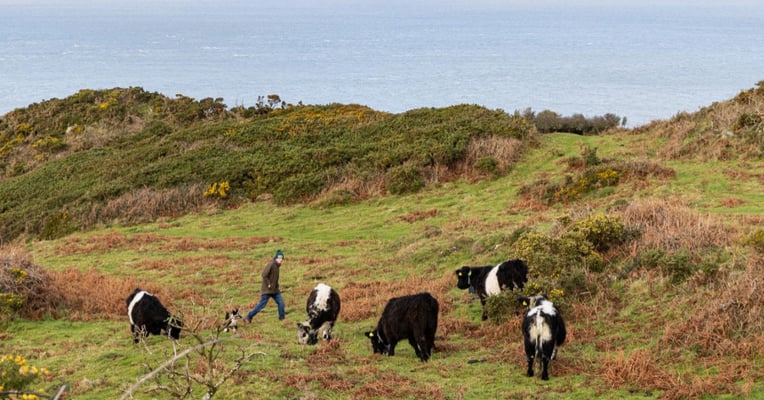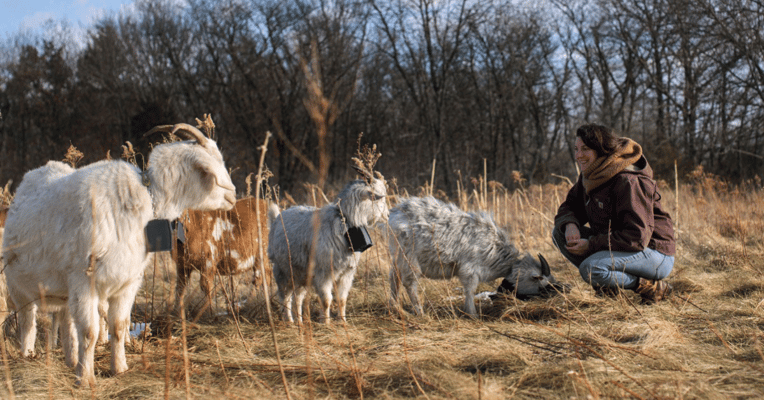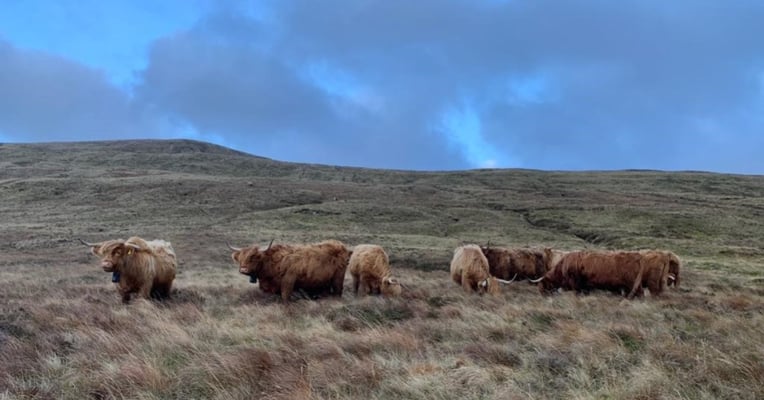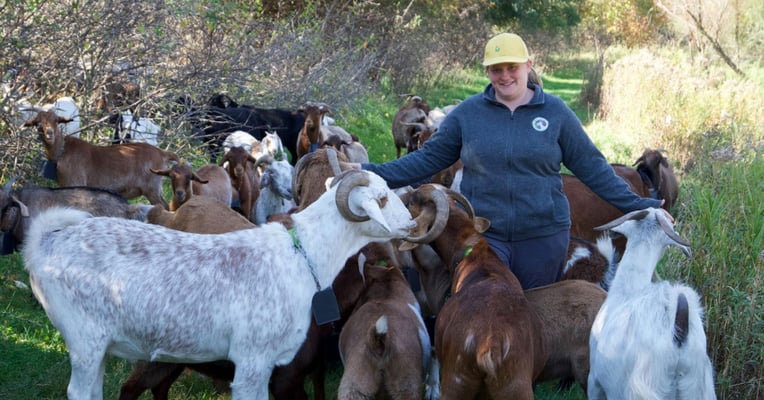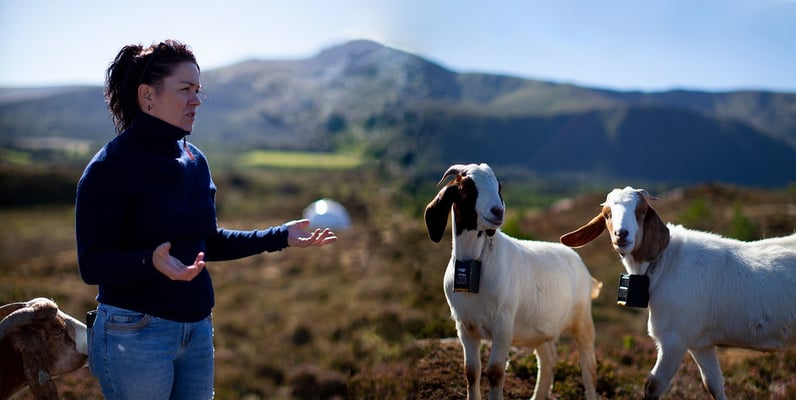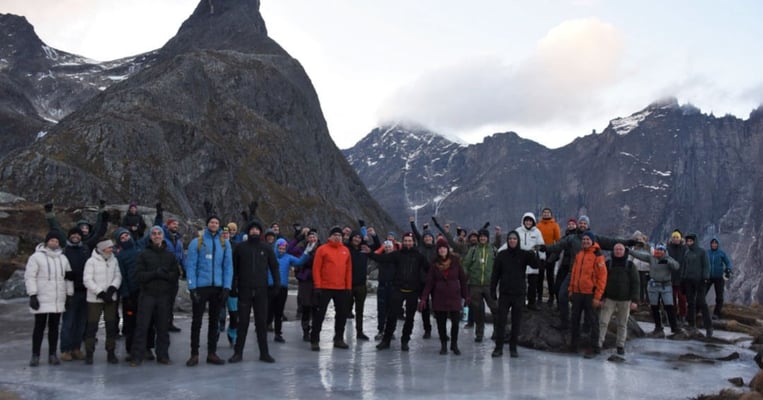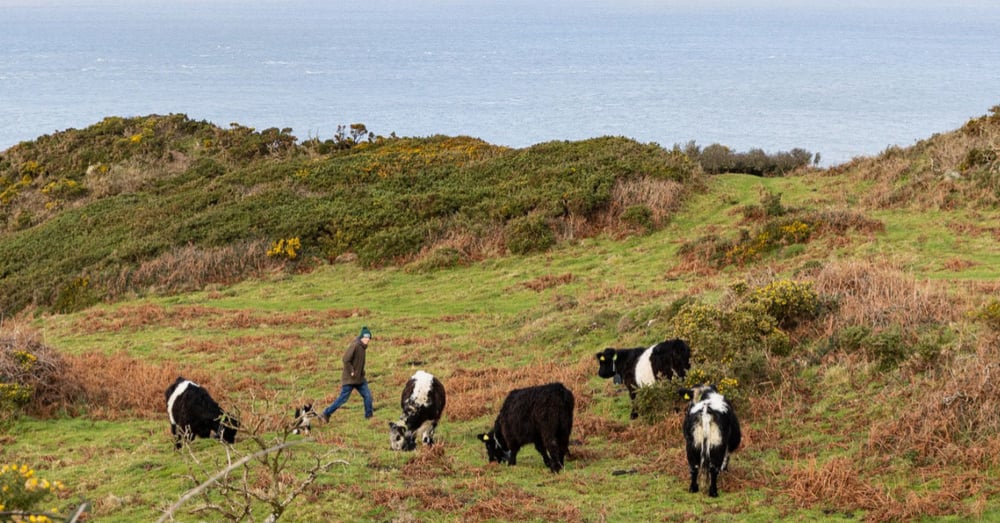
Virtual fencing allows cattle to graze the North Devon coastline

With the introduction of virtual fencing, conservation efforts and animal welfare are improving on National Trust land on England’s southwest coast of north Devon near Mortehoe.
The region is stunning, with miles of steep, rocky coastline. Thanks to public footpaths running along the tops, more than 100,000 walkers travel this specific stretch of coastline each year to take in the scenery.
Just a couple of miles as a crow flies sits Borough Farm, a family operation managed by David and Debbie Kennard and their son, Nick. Along with 200 acres of home farmland, Borough Farm has grazing rights to 240 acres of the coastline.
The rugged landscape paired with the high volume of foot traffic from the general public has created unique challenges for effectively managing livestock in the unfenced open grazing area while also looking after the stock’s welfare.
“We’re presented with a few unique challenges in this area. The biggest is the inability to install physical fencing to separate stock from the cliff’s edge – it is not cost-effective nor is it an option for a protected landscape such as this,” explains David. “Aside from that, we have to be very realistic with what we can achieve with the land. The topsoil is very acidic and grows a lot of bracken. Once rain slows down, things dry out and burn up quickly – it makes it hard to finish stock on.”
This has shaped the family’s business development, with a stock focus on a flock of 500 Exmoor Mules that graze the marginal grassland with lambs finishing over the winter on local dairy farms to keep improved grass leys tight.
According to David, sheep are the natural grazers of this rough coastal terrain, but uncontrolled dogs make grazing the cliff tops increasingly difficult.
“While we’ve been able to find a way to effectively farm sheep in a marginal grassland area, things still weren’t ideal,” says David. “Where there are walkers with dogs, there are always dogs that are let off leads. As a result, we were losing up to a dozen sheep a year that were tragically being attacked or chased over the cliffside.
“No matter what you do, the signage you put up, warnings issued – there are always people who ignore it and turn their dogs loose. There is an incredible amount of stress that goes with it.”
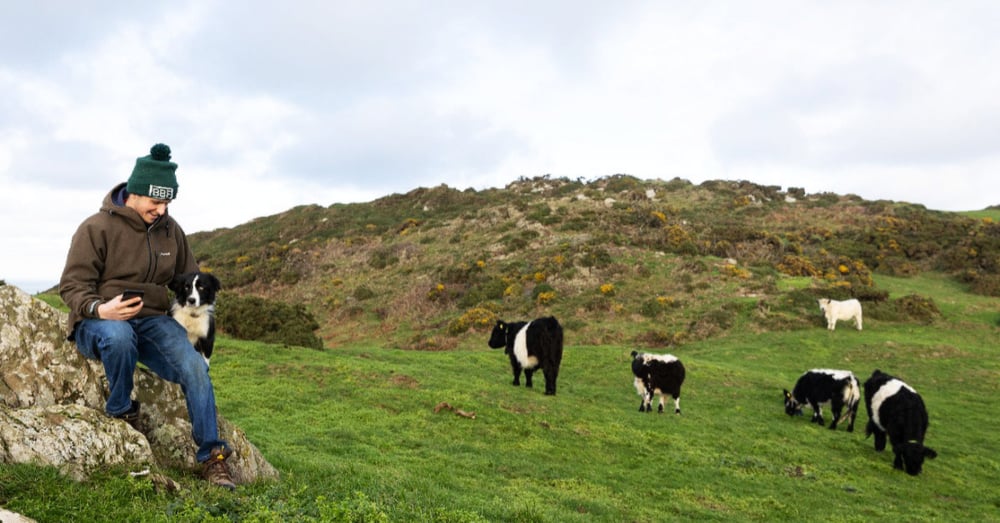
Using cattle to improve biodiversity and improve animal welfare
With miles of unfenced cliffs, the grazing of cattle had never been considered for the 240 acres of National Trust grazing. However, a decade ago, the farm introduced Devon crossbred calves from a local dairy farm to graze as part of their fenced-in land at Borough Farm.
“They were cracking calves but they were taking too long to finish and we weren’t comfortable grazing them on the National Trust land so, they went,” says David.
A few years later, the National Trust approached the Kennards about reintroducing cattle to the farm, but this time on the grassland with the open clifftops.
“From an environmental point of view, cattle are ideal for grazing this type of area. Where sheep will be less selective and graze down certain species of soft grass and flowers very tightly, cattle tend to be more selective and break down the grazing area more which creates open habitats for wildlife and other grass species to be more competitive,” says David. “Cattle are particularly beneficial in this area to break down and clear out brambles and bracken.”
After a few years of persistence from the National Trust, the Kennards cautiously purchased 10 head of Belted Galloway yearling finishers to graze the open area in the winter of 2020.
“Belted Galloways are hardy, smaller framed cattle that are capable of performing on marginal grassland. Because of the high volume of walkers and dogs, cows were still out of the question due to walker safety when calves were at foot or a bull was with them,” says David.
For the first 12 months of cattle grazing the cliffside ground, there were no issues. Optimistically, the Kennards increased their cattle herd from 10 to 20.
Then, in April of 2021, three head of cattle were lost over the cliff within six weeks.
“On welfare grounds, the cattle had to come off the cliffs,” says David. “The National Trust was very disappointed as the introduction of cattle grazing was a major part of their nature recovery plan for the North Devon coast, but clearly the combination of unfenced cliffs and high volume of walkers was making the project impossible.”
Finding solutions with Nofence virtual fencing technology
Looking for a solution to keep conservation efforts going, his National Trust warden came across Nofence. Together, he and David went to a Nofence open day and did individual research to see if the technology was right for them.
Deciding to give it a try, Nofence collars were purchased with grant funding through the Farming in Protected Landscapes scheme for 20 head of cattle in November 2021. After a month of training the cattle to listen with their ears to understand the virtual fencing perimeter rather than rely on their eyes to see physical fencing, the animals were reintroduced to the cliffside ground.
“We made sure they were not crossing the virtual boundary we had set within the fenced training area before turning them back out. We also set our virtual fence line 100 meters from the cliff edge, with the footpath running between the fence boundary and the cliff edge. This was to keep cattle from grazing between walkers with their dogs and the cliff edge,” explains David. “It’s not a foolproof system, but so far it has worked, and with very few exceptions the cattle have not crossed the virtual line.”
With data relayed back to his mobile phone, David can analyze the effectiveness of the system.
“Audio warnings are frequent, with some individuals receiving up to a dozen audio warnings a day, electrical pulses are rare, perhaps only a couple a week,” he says.
.jpg?width=1200&height=628&name=My%20project-1%20(7).jpg)
Providing new business opportunities
As the success of the Nofence system has held, the Kennards have reduced their sheep flock from 700 to 500 head and increased cattle herd numbers to 40, with the intention to reach 60 head in the next few years.
The ability to increase cattle capacity on the farm has opened up new business opportunities, with a premium being achieved for their native breed, grass-fed beef sold to a local abattoir at a carcass weight of 250kg. With low food miles, beef can be sold into meat box schemes.
“Nofence virtual fencing has been a viable solution for both our business and the National Trust,” concludes David. “Cattle grazing the cliffsides has already resulted in environmental benefits, with the National Trust able to utilise them as a tool for to produce results. We’ve equally benefitted, with the ability to diversify our business and find an economical way to keep cattle on the farm.”
